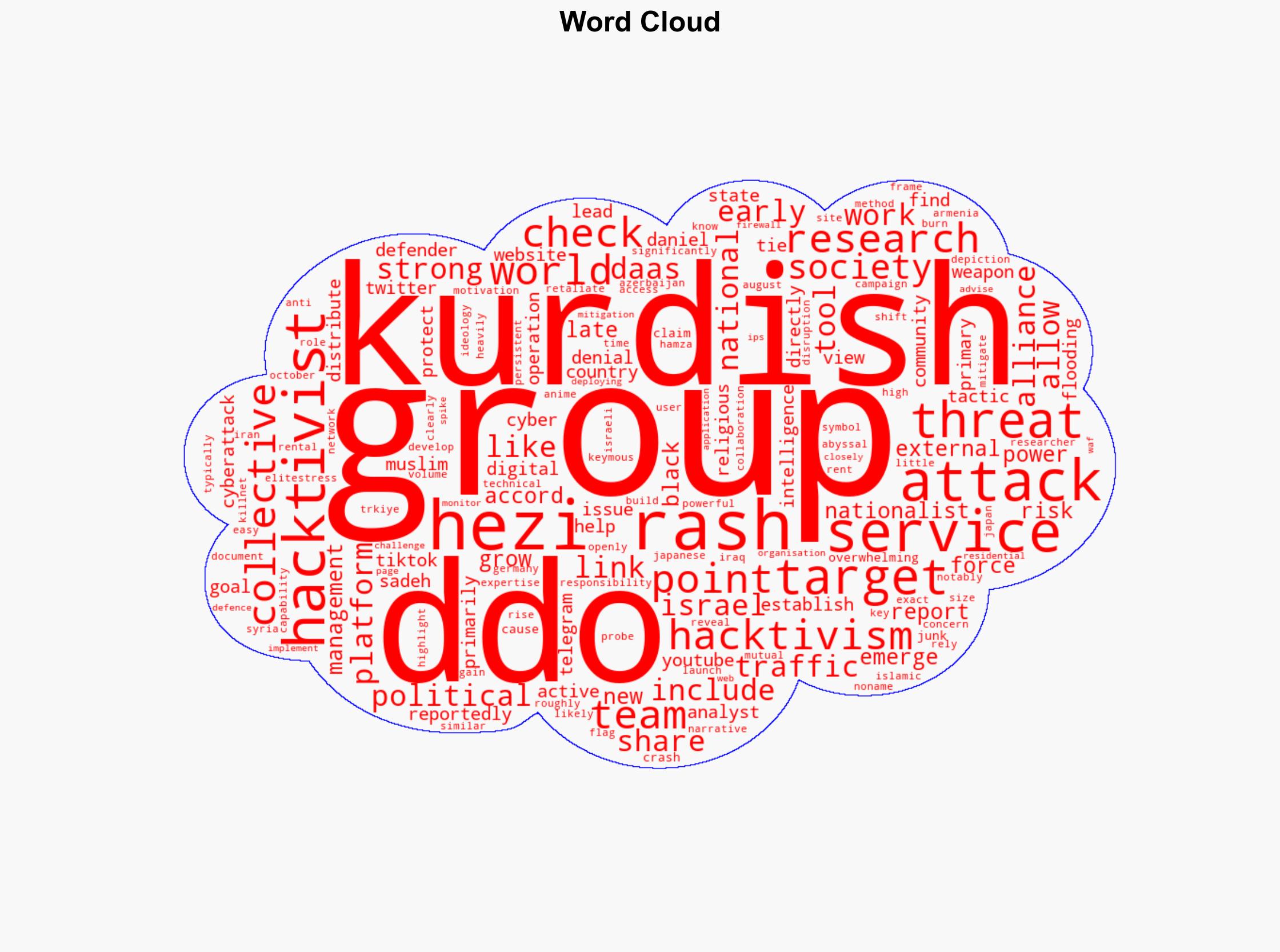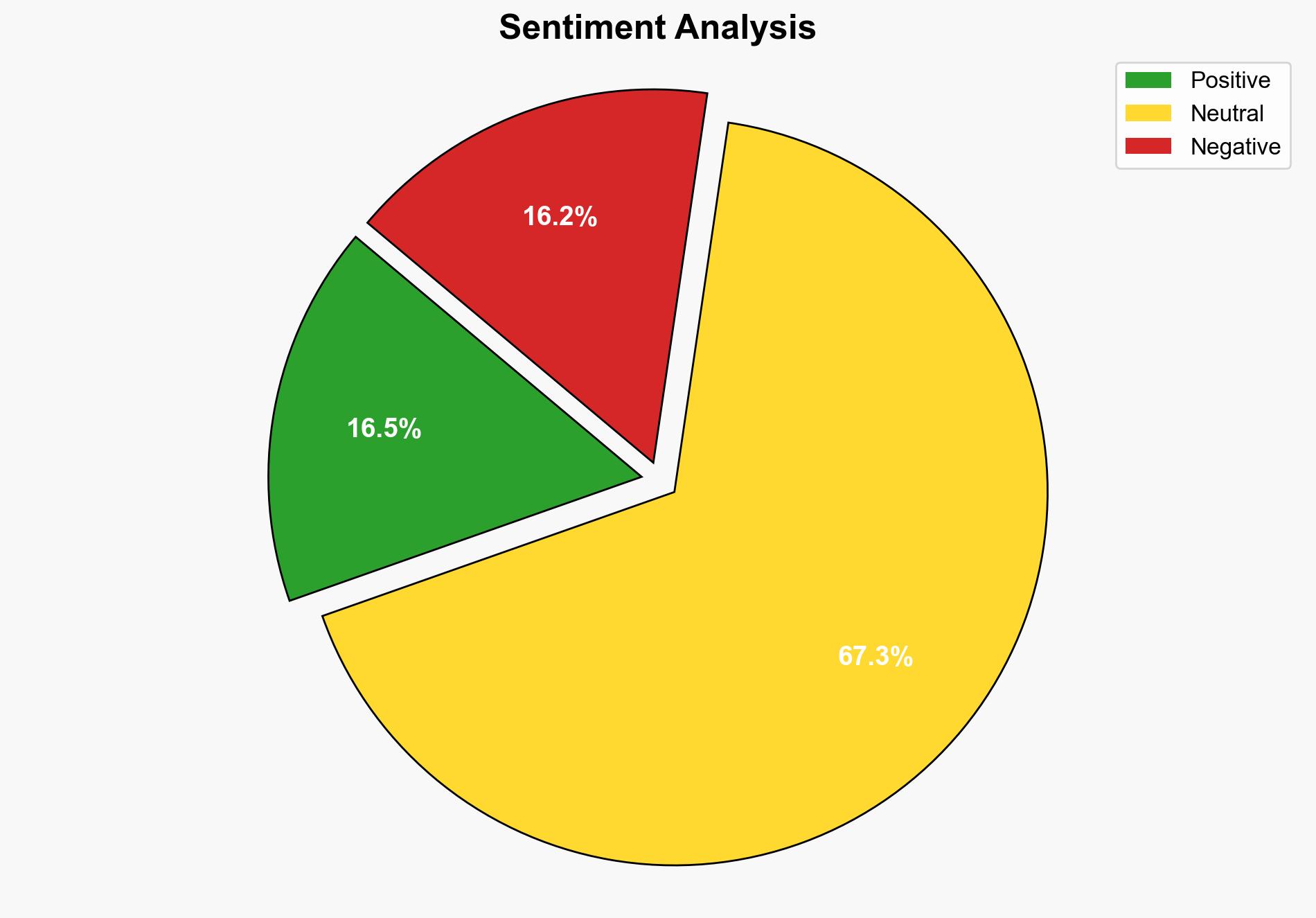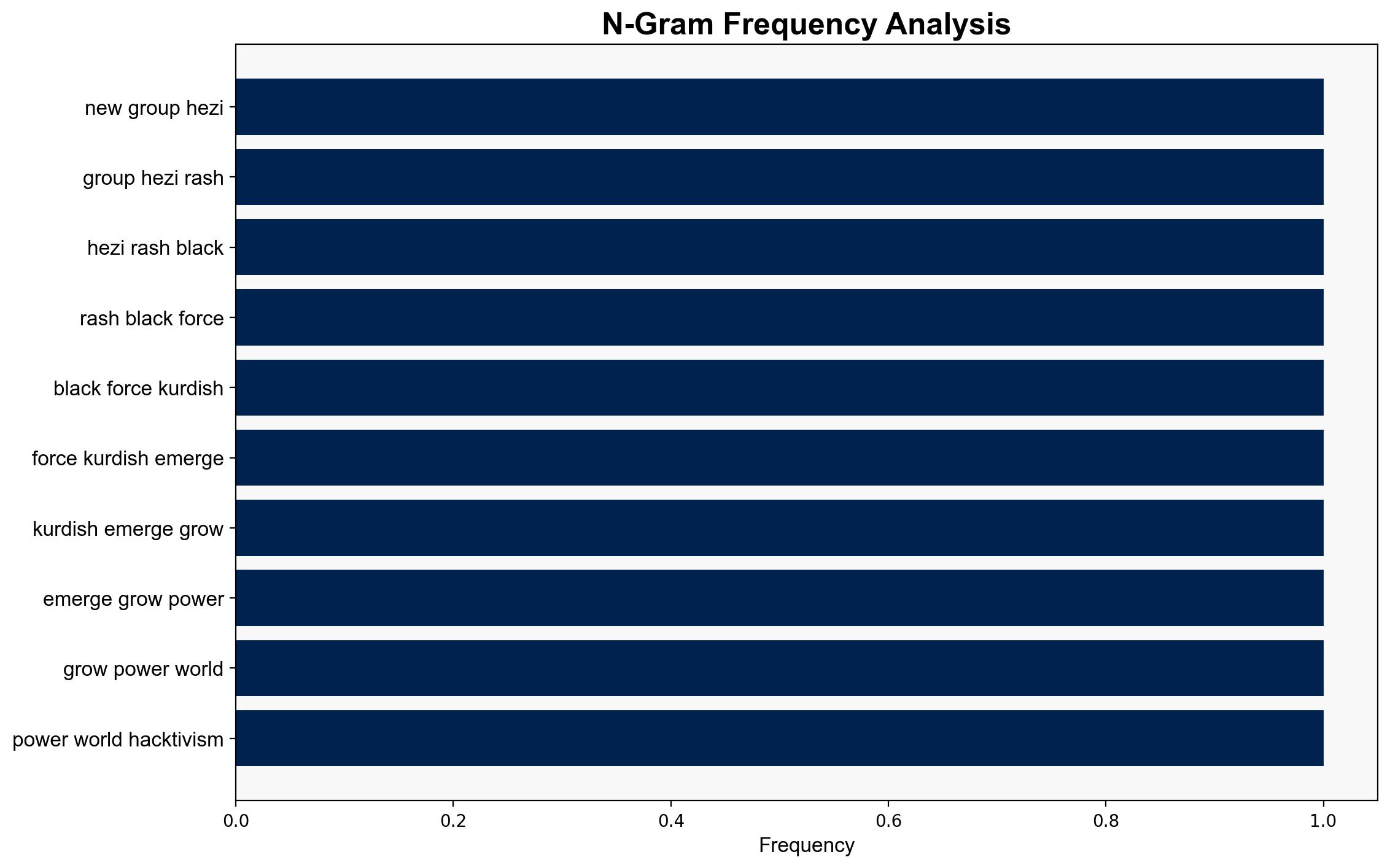New Kurdish Hacktivists Hezi Rash Behind 350 DDoS Attacks in 2 Months – HackRead
Published on: 2025-11-01
Intelligence Report: New Kurdish Hacktivists Hezi Rash Behind 350 DDoS Attacks in 2 Months – HackRead
1. BLUF (Bottom Line Up Front)
The emergence of Hezi Rash as a significant player in global hacktivism poses a growing cybersecurity threat, particularly due to their strategic alliances and use of DDoS-as-a-Service platforms. The hypothesis that Hezi Rash is leveraging external alliances and rented capabilities to amplify their impact is better supported. Confidence level: Moderate. Recommended action: Enhance monitoring of DDoS service platforms and strengthen international cybersecurity collaboration to mitigate risks.
2. Competing Hypotheses
Hypothesis 1: Hezi Rash is primarily an independent Kurdish nationalist group using DDoS attacks to advance their political agenda and protect Kurdish interests.
Hypothesis 2: Hezi Rash is heavily reliant on alliances with established hacktivist groups and rented DDoS capabilities, which significantly enhance their operational impact beyond their intrinsic capabilities.
Using Cross-Impact Simulation, Hypothesis 2 is more likely as it accounts for the high volume of attacks and the technical sophistication observed, which is atypical for a newly emerged group without external support.
3. Key Assumptions and Red Flags
Assumptions:
– Hezi Rash’s motivations are primarily political and nationalist.
– The group has access to advanced DDoS tools through alliances.
Red Flags:
– Lack of direct evidence linking Hezi Rash to specific attacks.
– Potential overestimation of Hezi Rash’s independent capabilities.
4. Implications and Strategic Risks
The rise of Hezi Rash highlights a shift towards more accessible cyber tools for political disruption, increasing the risk of similar groups emerging. Their activities could escalate tensions in regions with significant Kurdish populations, impacting geopolitical stability. The reliance on rented DDoS services suggests a growing market for cyber disruption tools, posing broader cybersecurity challenges.
5. Recommendations and Outlook
- Enhance international cooperation to monitor and regulate DDoS service platforms.
- Implement robust cybersecurity measures, including DDoS mitigation services and traffic monitoring.
- Scenario Projections:
- Best Case: Increased regulation and cooperation reduce the availability of DDoS services, limiting Hezi Rash’s capabilities.
- Worst Case: Hezi Rash’s activities inspire similar groups, leading to widespread cyber disruptions.
- Most Likely: Continued reliance on alliances and rented services sustains Hezi Rash’s operational impact.
6. Key Individuals and Entities
– Daniel Sadeh (Researcher documenting Hezi Rash activities)
– Keymous, Killnet, Noname Network (Allied hacktivist groups)
– Hamza (Developer of DDoS tool Abyssal)
7. Thematic Tags
national security threats, cybersecurity, counter-terrorism, regional focus





